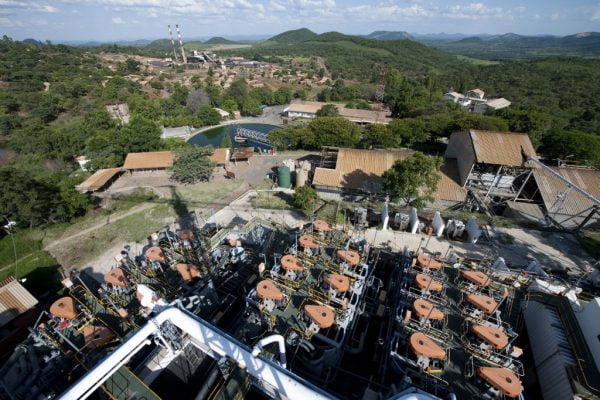Bindura Nickel profit up 136pc

Zimbabwe Stock Exchange listed nickel miner, Bindura Nickel Corporation, has posted a 136 percent increase in profit after tax to US$6,6 million for the half year period to September 30, 2019 from US$2,8 million the same period in 2018.
In a statement accompanying the financial results for the period, group chairman Muchadeyi Ashton Masunda, indicated the positive movement in profits emanated from “exchange gains and a decrease in the cost of sales which in turn, was attributable to the ongoing efforts to contain costs as demonstrated by the decrease in cash costs, year on year.”
Growth in profit after tax also seem to have been impacted by a significant 1 percent increase in average nickel price to US$9 052 per tonne from US$9 001 per tonne in prior year comparative.
On a general note, however, the prices “remained subdued into the year due to weak stainless steel demand, overstocking and the lack of real demand in class 1 nickel in the automotive industry.”
The remarkable movement in average nickel price had, in turn, translated to an 8 percent boost in revenue for the period to US$28,3 million from a comparative figure of US$26,2 million.
This boost in turnover had resulted in the group recording a 47 percent increase in gross profit to US$12 million against US$8,2 million in prior year comparative.
Profit growth was further a result of an increase in the tonnage of nickel concentrate sold to 3 002 tonnes against 2 980 tonnes in 2018. This was despite a 4 percent decrease in nickel production to 2 943 tonnes from a commendable tonnage of 3 076 tonnes in prior year comparative. The decline, according to Masunda, was “in line with the lower ore grade achieved, year on year.”
Ore mined during the period under review was 215 338 tonnes while ore milled was 215 728 tonnes.
Head grade at 1,34 percent was lower than the year-end of 1,64 percent, reflecting “the mining mix whereby more of disseminated ore was mined than the massives. Recovery was 86,1 percent compared to 86,3 percent achieved as at 31 March 2019.”
With a boost in profits, total equity also soared by 11 percent to US$66,1 million from US$59,5 million as at 31 March 2019. Current assets increased by 33 percent to US$29,3 million from prior US$22,1 million, reportedly due to “an increase in trade and other receivables.”
Meanwhile, Bindura Nickel projects gobbled a total US$3 million during the period under review. Of the total, shaft re-deepening took US$1,2 million while New LHDs and New Dumb Trucks cost US$0,7 million each. The Smelter Restart Project is reportedly still stationed at 83 percent complete while the Refinery and Shangani Mine, as usual, remain under care and maintenance. Going forward, the company places hope of an improvement in nickel prices in global dynamics.
Masunda indicated that prices given a boost above US$18 000 per tonne after the Indonesian government announced that it would bring forward the raw ore exports ban to 1 January 2020 from 1 January 2022.
India supplies 12 percent of the global nickel and its withdrawal of raw ore exports will effect a movement in prices. Phillipines, another global supplier expected to fill the void, reportedly produces low grade ore.
As with other businesses, Bindura Nickel also banks on the fruition of the ongoing United States of America / China trade talks. The talks have been disturbed by the recent Hong Kong unrest.
“Nickel demand is expected to remain high, with a projected average growth in excess of 4 percent per annum year on year. Stainless steel will remain the main consumer of nickel and is expected to average 67 percent while the use of Nickel in the production of electric vehicles is expected to increase to 18 percent by 2025,” and here lies Bindura’s growth prospects_Business Weekly


